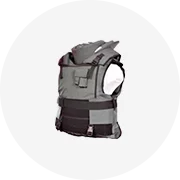Phổ biến trong ngành của bạn





 Sẵn sàng vận chuyển
Sẵn sàng vận chuyển









































Các danh mục hàng đầu
Giới thiệu về túi esd tái chế
Lấy sỉ túi esd tái chế tại Alibaba.com với giá cả phải chăng. Găng tay bảo hộ lao động của chúng tôi được làm từ chất liệu tốt nên rất thoải mái. Chúng có tác dụng chống ma sát đáng kinh ngạc để tạo ra một lực mạnh giúp tăng ma sát. Các mẫu và văn bản trên biển báo an toàn của chúng tôi rất rõ ràng. Ngoài ra, chúng còn có khả năng chống nước và chống bụi, giúp chúng bền và chắc.
Kính bảo hộ của chúng tôi cung cấp khả năng bảo vệ chuyên nghiệp khỏi sương nước trên ống kính của bạn. Nó cũng rất bền và giúp ống kính không bị vỡ khi bị va đập. Những thấu kính này có thể chắn cát, bụi, sỏi và các tác hại khác cho mắt một cách hiệu quả. Ngoài ra, mũ bảo hiểm mà chúng tôi cung cấp cũng có nhiều màu sắc và kiểu dáng. Ngoài ra còn có nhiều keyword kích cỡ cho các kích cỡ đầu khác nhau. Còn gì tuyệt vời hơn khi có thể in chữ và hoa văn lên những chiếc mũ bảo hiểm này. Bạn có thể tìm thấy tất cả các keyword sản phẩm bảo mật bạn cần tại Alibaba.com.
Mua sỉ túi esd tái chế tại Alibaba.com. Các nhà sản xuất túi esd tái chế với quy trình sản xuất được tiêu chuẩn hóa sẵn sàng cung cấp cho bạn và khách hàng của bạn tất cả những gì bạn cần. Chúng tôi cũng hỗ trợ các sản phẩm an toàn tùy chỉnh nếu bạn cần chúng được tùy chỉnh. Bạn có thể mua chúng kết hợp tại Alibaba.com bất cứ lúc nào. Chúng tôi cam kết tạo ra giá trị lớn hơn cho doanh nghiệp và khách hàng của bạn.











